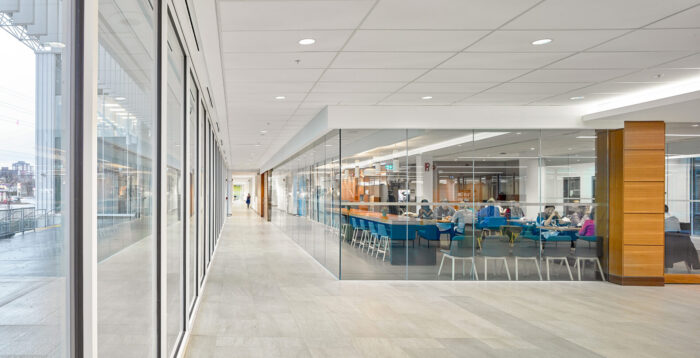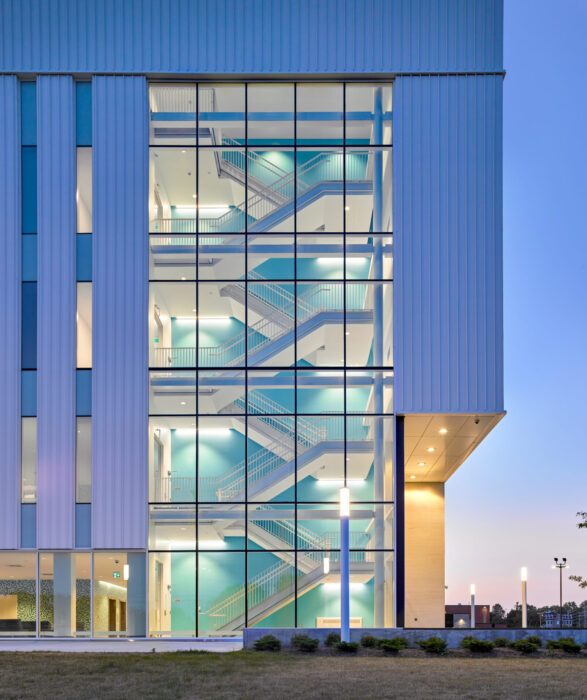
The Conestoga College Waterloo Campus expansion enhanced culinary program facilities and created a captivating showpiece for the college. The expansion, architecturally designed by Moriyama Teshima Architects, posed technical complexities for our engineers to solve. Completed on a fast-track timeline, this project is an excellent example of the power of engineering and architectural collaboration.
As part of the project, our engineers designed cutting-edge features that exemplify energy conservation and green technologies. These features include: 
Solar Power:
As energy conservation is aligned with the college’s core values, the project included a 150-kW solar installation on the building. The solar array was strategically placed above the main entrance, making it visible to students and the public. Balancing the building’s aesthetics with its functionality presented unique challenges, such as optimizing the array’s efficiency with limited space. Partnering with local solar installers, we coordinated the layout to ensure solar panels’ position, angle, and quantity worked efficiently with the building geometry. We designed the integration of the solar panels with the building’s electrical system and coordinated with the local utility.
Ice Storage:
Our mechanical team designed innovative ice storage cooling systems. The cooling system produces ice during evening hours and uses this ice to cool the building during the day, which allows for off-peak energy consumption and reduced operating costs.
Low-Temperature Heating System:
We introduced a low-temperature heating system to improve the building’s energy efficiency further. This system supplies hot water to the building between 95 – 130°F as opposed to a traditional heating system which delivers hot water at 180 – 200°F. This system incorporates high-efficiency condensing boilers rather than conventional boilers, resulting in a minimum 25% increase in overall boiler plant efficiency.
Demand Controlled Kitchen Ventilation:
We designed an innovative kitchen ventilation system with hood sensors to detect smoke and heat levels for added safety. During periods of low activity, it adapts the exhaust and makes air flow accordingly, reducing electricity consumption by up to 30%.

Demand Controlled Lighting and Ventilation:
Our electrical team designed a demand-controlled lighting and ventilation system that detects spaces with low or no occupancy, allowing lighting and ventilation to be reduced or shut off completely. This technology is instrumental in classrooms and labs as there are many periods where these spaces will have low/no occupancy. Annual electricity consumption from lighting and ventilation is expected to be reduced by up to 25% and 30%.


